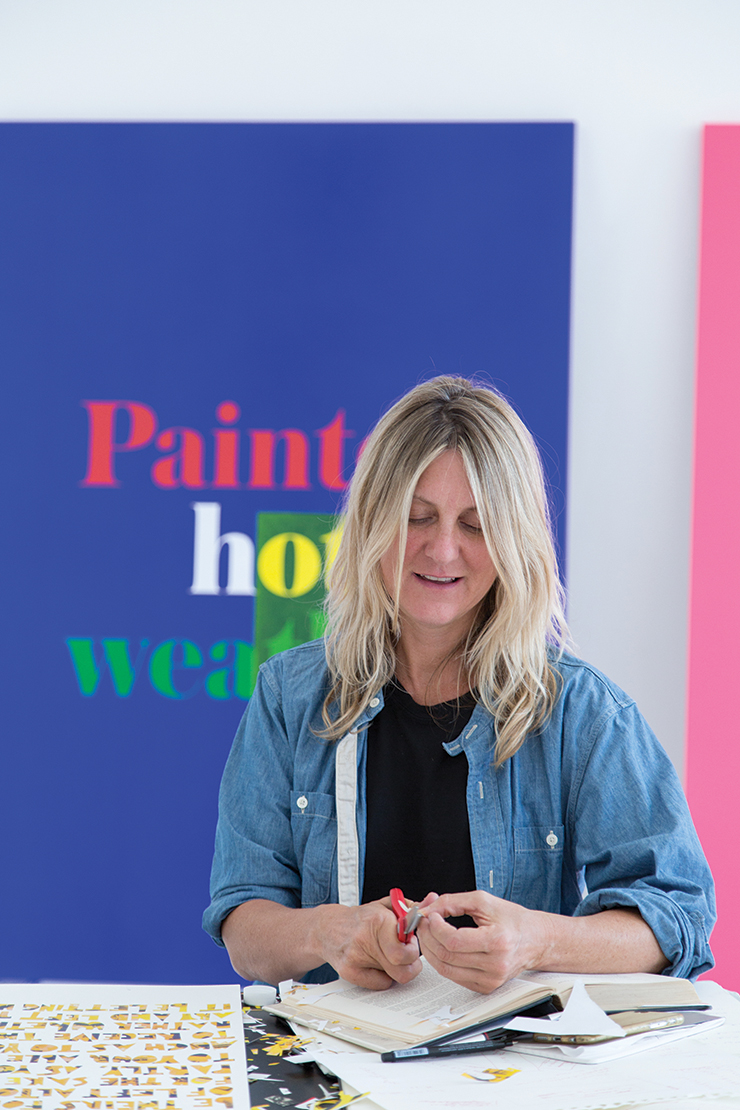
Most people know Eve Fowler via her Day-Glo posters featuring pungent snippets of verse from Gertrude Stein (The Difference Is Spreading; Anyone Telling Anything Is Telling That Thing; Rub Her Coke), or as the creative force behind Artist Curated Projects, the acclaimed gallery at her Hollywood apartment that has given early shows to promising Angeleno newcomers like Dashiell Manley, Celeste Dupuy-Spencer and Alex Becerra over the past eight years. But when Fowler was first emerging on the scene in the mid ’90s, after getting her MFA in art and photography from Yale, the Philadelphia-born artist earned her stripes with a four-year portraiture project capturing gay male hustlers on the streets of New York and Los Angeles, some of which are now in the permanent collections at the San Francisco Museum of Modern Art and the Los Angeles County Museum of Art and in newsprint books sold at Printed Matter.
“I did it in part to say something about identity politics, because I really wanted to connect to something that was gay,” says Fowler, who followed that work with erotic images of her girlfriends and lesbian luminaries (like K8 Hardy in crotchless pants) and a series of “wrapped books”—first shown in 2010 at Kathryn Andrews’ home gallery, Apartment 2—comprised of tables full of ’70s and ’80s texts sourced from the sale racks of the One National Gay and Lesbian Archives in Los Angeles that she wrapped in Xeroxed paper collages of vintage photos, old Artforum pages and archival gay rights imagery. Around this time, she was also making photograms with Anna Sew Hoy (under the banner of Two Serious Ladies), launched ACP (to address “the artist’s lack of power”) and began pouring over lists of gay books and films, which got her reading Stein’s “Tender Buttons.”
“I had been reading so many books with gay content for a few years, but I was struck by this because it was written in 1914 and seemed so coded and queer,” says Fowler, who was given a free studio by her former partner in ACP and started printing Stein’s lines on Colby posters—first, This Is It With It As It Is; then, It is so, is it so, is it so, is it so is it so is it so., which was later immortalized in oil by Nicole Eisenman—which she tacked to telephone poles between Downtown L.A. and Hollywood. Fatefully, she received some instant (and instantly rewarding) validation from an unlikely source.
“The second after I put one up this kid came over and said, ‘What does that mean?’ I said, ‘It’s from a poet named Gertrude Stein. It doesn’t necessarily have to mean anything,’” recalls Fowler. “He said, ‘Cool, it’s like music.’” Six years on, Fowler’s musical text works have become their own icons: now in paintings made to resemble ’60s and ’70s graphic design, walnut sculptures with bronze inlays, billboards, and a new series of red, white and blue collages clipped from earlier collages featuring every line from every Stein text, which will soon grace the walls of New York’s Participant, Inc. While Fowler is fiercely devoted to ACP, she argues her own work is ultimately about frustrations that ironically mimic those of Stein, the ultimate Gladwellian connector who gave platforms to countless famous artists while toiling (largely) in the shadows during her lifetime.
“People know who she is as a cultural figure who helped Picasso and Matisse but even today people still don’t read her books,” says Fowler. “I really do understand that frustration.”










 in your life?
in your life?

